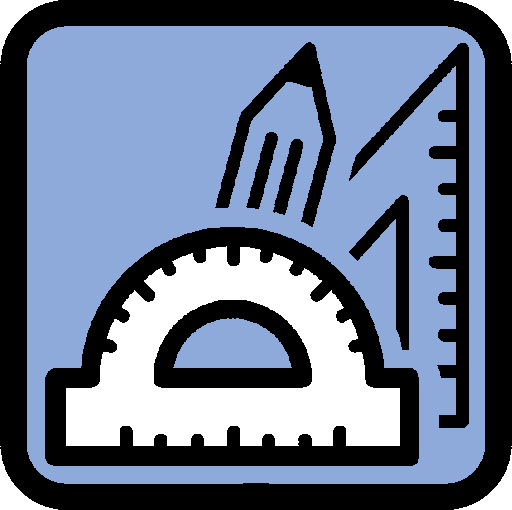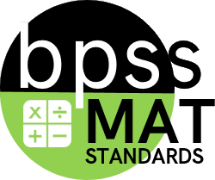MAT-03.GM.G.01

|
3rd Grade (MAT) Targeted Standard
(GM) Geometry and Measurement
(G) Geometry
Learners will compose and classify figures and shapes based on attributes and properties; represent and solve problems using a coordinate plane.
|
MAT-03.GM.G.01 In two-dimensional shapes, identify lines, angles (right, acute, obtuse), and perpendicular and parallel lines.*
 Proficiency Scale Proficiency Scale
Progressions
Two-Dimensional Shapes
- MAT-00.GM.G.01 Name shapes and identify them as two-dimensional (squares, circles, triangles, rectangles)regardless of their orientations or overall size.
- MAT-00.GM.G.03 Compare and classify two-dimensional shapes to describe their similarities, differences, and attributes (squares, circles, triangles, rectangles).
- MAT-01.GM.G.01 Name shapes and identify them as two-dimensional (trapezoids, rhombuses, pentagons, hexagons, octagons).
- MAT-01.GM.G.03 Determine geometric attributes of two-dimensional and three-dimensional shapes.
- MAT-02.GM.G.01 Identify two-dimensional shapes (parallelograms and quadrilaterals).
- MAT-02.GM.G.03 Compose geometric shapes having specified geometric attributes, such as a given number of edges, angles, faces, vertices, and/or sides.
- MAT-03.GM.G.01 In two-dimensional shapes, identify lines, angles (right, acute, obtuse), and perpendicular and parallel lines.
- MAT-03.GM.G.02 Sort quadrilaterals into categories based on attributes.
- MAT-04.GM.G.01 Identify, label, and draw points, lines, line segments, rays, and angles (right, acute, obtuse).
- MAT-04.GM.G.02 Classify two-dimensional figures based on the presence or absence of parallel or perpendicular lines or the presence or absence of angles of specified size.
- MAT-05.GM.G.01 Classify two-dimensional figures in a hierarchy based on properties.
- MAT-10.GM.01 Know precise definitions of angle, circle, perpendicular line, parallel line, and line segment based on the undefined notions of point, line, and plane.
- MAT-10.GM.09 Prove and apply theorems about lines and angles.
- MAT-10.GM.10 Prove and apply theorems about triangles.
- MAT-10.GM.11 Prove and apply theorems about parallelograms.
- MAT-10.GM.34 Identify the shapes of two-dimensional cross-sections of three-dimensional objects and identify three-dimensional objects generated by rotations of two-dimensional objects.
Coordinate Plane
- MAT-03.GM.G.01 In two-dimensional shapes, identify lines, angles (right, acute, obtuse), and perpendicular and parallel lines.
- MAT-05.GM.G.02 Identify the x-coordinate and y-coordinate to graph and name points in the first quadrant of the coordinate plane.
- MAT-5.GM.G.03 Form ordered pairs and graph points in the first quadrant of the coordinate plane to solve authentic word problems.
- MAT-6.GM.GF.01 Identify and position ordered pairs of rational numbers in all four quadrants of a coordinate plane.
- MAT-6.GM.GF.02 Draw polygons in the coordinate plane given coordinates for vertices. Determine the length of a side joining points with the same first or second coordinate, including authentic problems.
- MAT-10.GM.27 Develop and verify the slope criteria for parallel and perpendicular lines. Apply the slope criteria for parallel and perpendicular lines to solve geometric problems using algebra.
- MAT-10.GM.28 Verify simple geometric theorems algebraically using coordinates. Verify algebraically, using coordinates, that a given set of points produces a particular type of triangle or quadrilateral.
- MAT-10.GM.29 Determine the midpoint or endpoint of a line segment using coordinates. (+) Find the point on a directed line segment between two given points that partitions the segments in a given ratio.
- MAT-12.NO.10 Represent complex numbers on the complex plane in rectangular, trigonometric, and polar forms. Find the modulus (absolute value) of a complex number. Explain why the rectangular, trigonometric, and polar forms of a given
complex number represent the same number.
- MAT-12.NO.11 Represent addition, subtraction, multiplication, conjugation, powers, and roots of complex numbers geometrically on the complex and/or polar plane; use properties of this representation for computation.
- MAT-12.NO.14 Recognize vector quantities as having both magnitude and direction, writing them in polar form.
- MAT-12.NO.15 Find the components of a vector by subtracting the coordinates of an initial point from the coordinates of a terminal point.
- MAT-12.NO.16 Solve problems involving magnitude and direction that can be represented by vectors.
- MAT-12.NO.17 Add and subtract vectors.
- MAT-12.NO.18 Multiply a vector by a scalar.
- MAT-12.AR.F.18 Explain how the unit circle in the coordinate plane enables the extension of trigonometric functions to all real numbers, interpreted as radian measures of angles traversed counterclockwise around the unit circle.
- MAT-12.AR.F.19 Use the unit circle to express the values of sine, cosine, and tangent for π - x, π + x, and 2π - x in terms of their values for x, where x is any real number.
Angles/Triangles
- MAT-03.GM.G.01 In two-dimensional shapes, identify lines, angles (right, acute, obtuse), and perpendicular and parallel lines.
- MAT-04.GM.G.01 Identify, label, and draw points, lines, line segments, rays, and angles (right, acute, obtuse).
- MAT-04.GM.M.07 Recognize angle measures as additive and solve addition and subtraction problems to find unknown angles on a diagram.
- MAT-07.GM.GF.01 Draw triangles from given conditions using appropriate tools. Defend whether a unique triangle, multiple triangles, or no triangle can be constructed when given three measures of angles or sides.
- MAT-07.GM.GF.02 Describe the angle-pair relationships: supplementary angles, complementary angles, vertical angles, and adjacent angles. Solve for an unknown angle in a figure by applying facts about these angles.
- MAT-08.GM.GF.04 Describe the following angle-pair relationships: interior and exterior angles of triangles and angles formed when a transversal cuts parallel lines or intersecting lines. Solve for an unknown angle in a figure by applying
facts about these angles.
- MAT-08.GM.GF.05 Describe the relationship between the leg length and the hypotenuse length of a right triangle. Determine whether a triangle is a right triangle using this relationship.
- MAT-08.GM.GF.06 Apply the Pythagorean Theorem to determine unknown side lengths in right triangles in two and three dimensions on and off a coordinate plane, including authentic problems.
- MAT-10.GM.01 Know precise definitions of angle, circle, perpendicular line, parallel line, and line segment based on the undefined notions of point, line, and plane.
- MAT-10.GM.09 Prove and apply theorems about lines and angles.
- MAT-10.GM.10 Prove and apply theorems about triangles.
- MAT-10.GM.18 Recognize how the properties of similar right triangles allow for trigonometric ratios to be defined and determine the sine, cosine, and tangent of an acute angle in a right triangle.
- MAT-10.GM.19 Explain and use the relationship between the sine and cosine of complementary angles.
- MAT-10.GM.20 Solve applied problems involving right triangles using trigonometric ratios, the Pythagorean Theorem, and special right triangles (30º, -60º, -90º, and 45º-45º-90º).
- MAT-10.GM.21 Solve unknown sides and angles of non-right triangles using the Laws of Sines and Cosines.
- MAT-10.GM.23 Construct the incenter and circumcenter of a triangle. Relate the incenter and circumcenter to the inscribed and circumscribed circles.
- MAT-10.GM.24 Construct a tangent line from a point outside a given circle to the circle.
- MAT-10.GM.26 Recognize that the radian measure of an angle is the ratio of the length of the arc to the length of the radius of a circle.
- MAT-12.AR.F.16 Extend right triangle trigonometry and apply knowledge of the unit circle to determine values of sine, cosine, and tangent for multiples of π/3, π/4, and π/6.
- MAT-12.AR.F.17 Use the Pythagorean Identity sin² (θ) + cos² (θ) = 1 to find sin (θ), cos (θ), or tan (θ) given sin (θ), cos (θ), or tan (θ) and the quadrant of the angle.
- MAT-12.GM.03 Determine and apply appropriate formulas to solve right and non-right triangle problems in context
|


